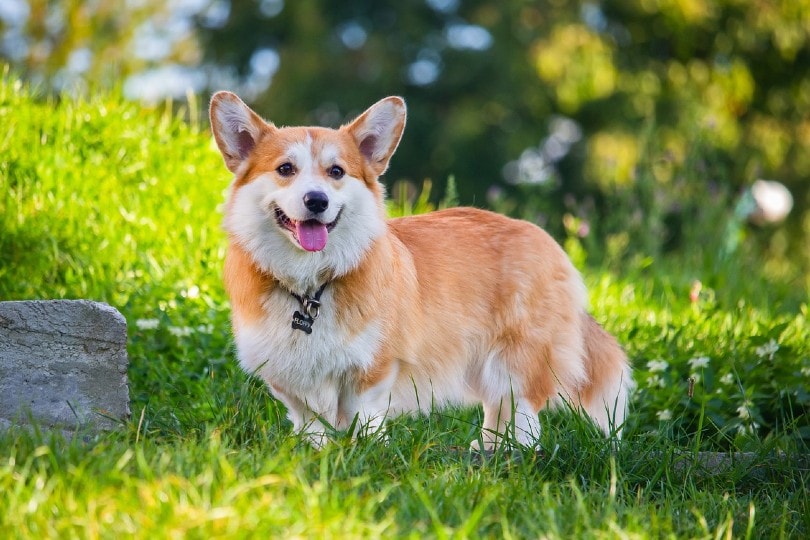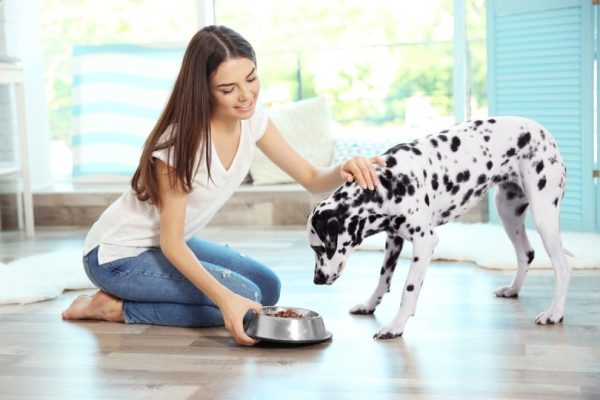In this article
Welsh Corgis are beautiful dogs and highly recognizable whether you have a Cardigan or a Pembroke. Whichever you have, or even if you have a miniature, it’s important to know that these dogs grow very quickly and will reach their full size in just a year. This should make it easier to tell if they are falling behind, especially if you can estimate their mature size based on breed.
There could be several reasons your Corgi seems a bit smaller than others, from their genes to genetic abnormalities. Most are very common and could be how your puppy is, or they may need routine care, like deworming.
Whatever the cause for their small size, it’s essential to understand it so you can put your worries to rest and get back to enjoying the companionship and cuddles that Corgis are known for.

The 5 Reasons Why a Corgi is So Small
1. Their Breed
Only two Corgi breeds are recognized by the American Kennel Club, both of which are different in size and stature. Male Cardigan Corgis can weigh as much as 38 pounds when fully grown, while female Pembroke Corgis only up to 30 pounds. Females are typically a little smaller.
Miniature Corgis aren’t officially listed as a breed but are often found at breeders and pet stores as much a smaller version. Because there are no breeding standards, weights, and overall sizes can vary greatly. If adopted as puppies and not purebreds or listed explicitly as a miniature, you may not know until they reach full size.

2. Genetics
Like humans, dogs get many physical traits from their parents, grandparents, and so on. This could be their coloring, ear size, stance, and tail curvature. More often, though, it’s their size and stature. If you know more about a Corgi pup’s parents, you have a better idea of how big they might get when fully grown.
If both are on the small size for their breed, it’s safe to assume that their pups will be as well. While this isn’t always the case, and bigger dogs can breed smaller puppies and vice versa, it’s a great way to judge a dog’s full-grown size.
3. Parasite Infection
Many parasitic worms can be troublesome to dogs, especially growing puppies. One of the most common and easily spread parasites is roundworms. These worms live inside the intestines, feeding on partially digested food. Once the worms get ahold of it, your puppy cannot digest it themselves, robbing them of the nutrients you’re providing them.
Puppies unable to digest adequate nutrients may not grow as quickly, and severe roundworm infections that aren’t treated as soon as possible could result in stunted growth. If you notice your puppy with a bloated belly or experiencing stomach upset with excessive gas, you’ll want to see their vet for a proper diagnosis and treatment to prevent any long-term effects.

4. Malnutrition
While malnutrition could be attributed to parasites or a medical condition, which their vet should be able to diagnose, it could simply be a case of malnutrition. Feeding a poor diet or not enough food for the puppy’s size and weight can lead to slow growth, eventually leading to your Corgi being small as an adult.
The best way to avoid this is to find high-quality puppy food designed for their breed or size. You can ask for a brand recommendation from a veterinarian. Puppy formulas are designed to give added nutrition important for dogs still growing quickly to help support their bones, joints, muscles, eyes, immune system, and more.
If you need to speak with a vet but can't get to one, head over to PangoVet. It's our online service where you can talk to a vet online and get the personalized advice you need for your pet — all at an affordable price!

5. Portosystemic Shunt
A portosystemic shunt (PSS) is rare in dogs, but a puppy can be born with the disorder that results in poor weight gain and failure to meet specific growth milestones as they develop. Adult dogs can also acquire PSS over time due to chronic or acute liver damage.
This dysfunction creates an abnormal vein between the intestines and the heart, bypassing the liver, which is required to digest food and absorb nutrients. It’s most common in the pups who seem to be the “runt” of the litter, but other symptoms can vary widely, from increased thirst to neurological symptoms. The only way to treat PSS is a surgical correction.


How Do You Know Your Corgi Is Too Small?
Corgis are fast-growing puppies, especially compared to other dog breeds. Most are nearly full-grown by the time they reach 1 year, whereas many other breeds reach size maturity at around 2 years old, some even older.
Because they grow so quickly, you may notice them slow or stop growing when they are still young and feel something has gone wrong. Rest assured, they’ve just reached their full, or nearly full, size. What size should that be? Let’s take a look.
Cardigan Welsh Corgi

The Cardigans are the largest of the Corgi breeds. Males could range from 30 to 38 pounds when fully grown, while females are smaller and range from 25 to 34 pounds. Although there is a weight difference, both genders could be between 10 to 13 inches in height, giving them a short stance.
They differ from the Pembroke Welsh Corgi in several ways, like being a bit more laid back and quiet.
Pembroke Corgi

The Pembrokes are quite a bit smaller than their Cardigan cousins. Adult males are typically only between 26 and 28 pounds, with females just slightly smaller at 24 to 26 pounds. They are a bit shorter as well. Males should be 12 inches tall, and females only reach 10 inches.
Their appearance is also a bit different, with a shorter coat, different tail typically docked, and varying colors.
Miniature Corgi

Miniature Corgis have no established breeding standards. Instead, many breeders have been trying to create smaller versions that potential dog owners may find appealing, with no clear lineage.
With many breeders each working separately in different ways to create these smaller Corgis, it is difficult to know that you have a miniature and not a Pembroke or Cardigan Welsh Corgi unless you have AKC certification or other proof your puppy is purebred.
If you know your puppy is a miniature, you may not be aware of the breeds used to create their small size, making it difficult to estimate their size when full-grown and to know if they are, in fact, too small for their breed.

Final Thoughts
If you have concerns about your Corgi’s size, schedule a visit with their vet. They will be able to diagnose or rule out any more severe medical conditions contributing to it, as well as provide treatment if necessary.
However, many Corgi pups are small simply because of their breed or genetics.
See also:
Featured Image Credit: Rita_Kochmarjova, Shutterstock


















